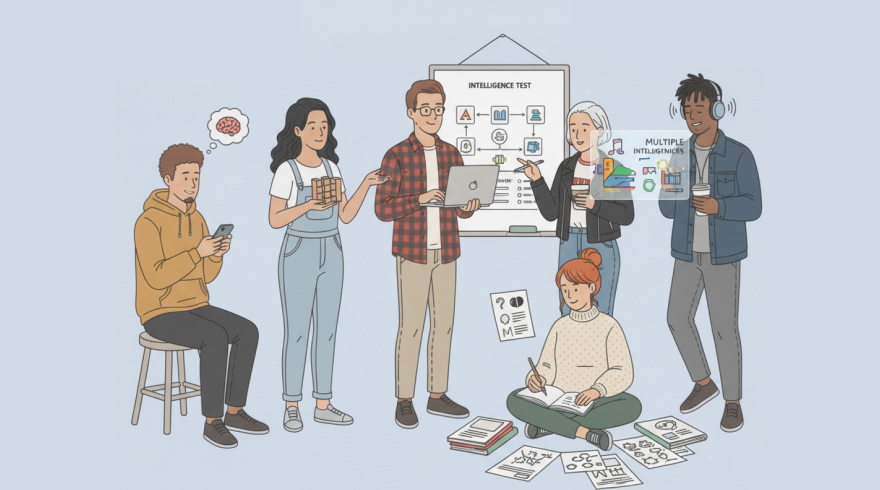Kolb’s Experiential Learning: A Complete Guide to Styles, Tools, and Benefits
- 7 November 2025

Foundations of Experiential Learning and Why Styles Matter
Experiential learning explains how people transform experience into knowledge by cycling through doing, reflecting, conceptualizing, and experimenting. Rooted in cognitive and humanistic psychology, this model highlights that no single approach fits every learner and that growth comes from flexing across modes. Educators and coaches use the framework to create inclusive courses, practical workshops, and development programs that align with diverse preferences. Among practical tools, educators adopt Kolb learning style test insights to build self-awareness, calibrate teaching tactics, and promote a shared language for learning improvement.
When people understand their preferences, they actively design study routines and collaboration habits that play to their strengths while stretching weaker tendencies. Across classrooms and corporate academies, many guides reference the Kolb learning style test as a gateway to reflective practice and evidence-informed instruction. The outcome isn’t a label to cling to; it is a snapshot that invites continuous adaptation as tasks and contexts shift. With thoughtful coaching, the model encourages curiosity, metacognition, and a growth mindset rather than fixed categories.
- Promotes a cycle of action and reflection for durable learning.
- Supports differentiated instruction and inclusive facilitation.
- Builds a common vocabulary for discussing how people learn best.
What the Assessment Measures and the Four-Stage Cycle
The instrument gauges preferences along two intersecting dimensions: concrete experience versus abstract conceptualization, and reflective observation versus active experimentation. Scores situate a learner within a circular process that can begin at any point and proceeds iteratively. For measurement, practitioners commonly rely on the validated Kolb test instrument to locate preferences along concrete–abstract and active–reflective axes. Interpreting the pattern helps learners anticipate where they might feel energy or friction during projects, labs, or study blocks.
Results connect to four styles that emerge from the combination of the dimensions and their relative strengths. When mapping results into named patterns, facilitators describe how the Kolb learning styles test distinguishes Diverging, Assimilating, Converging, and Accommodating profiles. Each pattern suggests natural tendencies for gathering information and making decisions, yet all learners benefit from practicing the full cycle. Skilled educators design activities that intentionally touch every mode so that groups move, as needed, from ideas to experiments and back to reflection.
- Concrete Experience: immersive doing and feeling in real contexts.
- Reflective Observation: pausing to notice patterns and meanings.
- Abstract Conceptualization: building models and explanations.
- Active Experimentation: testing hypotheses and iterating quickly.
Benefits for Learners, Educators, and Organizations
Personalizing learning increases motivation, retention, and transfer to real work. Individuals who understand their preferences craft study strategies that match the difficulty and purpose of tasks, whether that means prototyping early or lingering on case analysis. In campus orientations, some cohorts receive limited access to a Kolb learning style inventory test free option bundled with study-skills workshops. That initial exposure can catalyze reflective journaling, peer coaching, and better time management in demanding terms.
Teams gain a common framework that reduces friction and accelerates collaboration, especially in cross-functional projects that require both ideation and execution. For outreach or research pilots, an institute may circulate Kolb's learning style inventory test free trials to broaden participation and gather feedback. Beyond individual insight, leaders use aggregated trends, ethically and anonymously, to refine onboarding, design curricula, and target performance support. The real benefit emerges when insights inform action plans, not just reports.
- Improves study efficiency through tailored methods and routines.
- Enhances facilitation by aligning activities with multiple modes.
- Strengthens teams by clarifying complementary strengths.
- Informs program design with data-driven, learner-centered choices.
The Four Styles at a Glance: Strengths and Strategies
All four patterns are valuable, and most people exhibit a primary style with situational flexibility. Before planning study tactics, a learner might first try a reputable free Kolb learning style test to spark curiosity and frame a reflective conversation. After identifying tendencies, it helps to combine strategies, such as structured note-making with rapid prototyping, so growth is balanced across the entire cycle.
| Style | Primary strengths | Study strategies |
|---|---|---|
| Diverging | Empathy, idea generation, broad perspectives | Use mind maps, compare case narratives, host feedback circles |
| Assimilating | Concept building, analysis, theoretical clarity | Summarize models, create concept glossaries, diagram systems |
| Converging | Problem solving, technical application, decision making | Run simulations, build prototypes, set measurable experiments |
| Accommodating | Action orientation, adaptability, hands-on learning | Do fieldwork, rotate roles, reflect briefly and iterate fast |
Use the grid to balance comfort with stretch so that projects include observation, model building, and experimentation. After reviewing the table, participants often compare their scores from a formal Kolb learning style inventory test with observed behaviors during projects. The combination of evidence, self-report plus real-world artifacts, creates a richer, more reliable picture of how someone learns across contexts and constraints.
How to Take, Interpret, and Apply Results
Preparation matters: pick a quiet time, read items carefully, and answer honestly based on typical behaviors, not ideals. Without overspending, newcomers can start by using a concise Kolb learning style test free sample to practice interpreting scales and statements. Once you have preliminary insights, schedule a brief debrief with a mentor or study partner to translate scores into next-week actions.
Interpretation improves with evidence, so keep a short learning journal for two weeks and note where energy rises or dips. To keep momentum high, teams sometimes schedule a shared Kolb learning style test online session during onboarding and discuss implications immediately afterward. Link results to specific tactics, such as cadence of reflection, choice of resources, and peer-support structures, so your plan survives the busy season. Revisit the cycle quarterly and adjust as roles or subjects change.
- Do: Pair insights with measurable experiments and timelines.
- Do: Blend styles intentionally within group projects.
- Avoid: Treating styles as fixed traits or excuses.
- Avoid: Overgeneralizing from one snapshot without observation.
Choosing Platforms, Ensuring Quality, and Ethical Use
Quality assessments provide clear documentation, norms, and transparent scoring. Check whether the provider explains the theory, offers guidance for interpretation, and protects your data. For comparison shopping, procurement teams will review any Kolb learning style test online free demos alongside paid versions, checking reliability notes and privacy policies. When in doubt, look for evidence of peer review, psychometric rigor, and responsible use statements.
Ethical practice includes consent, limited data retention, and using results to support growth rather than gatekeep opportunity. Where transparency matters, reputable providers explain how a Kolb learning style inventory free test aligns with the psychometrics of their licensed instruments. Organizations should train facilitators to avoid stereotyping, to invite reflective dialogue, and to encourage cross-style collaboration. With those safeguards, the model becomes a constructive scaffold for continuous improvement.
- Verify reliability, validity, and norm groups before adoption.
- Protect learner privacy with clear consent and retention policies.
- Use aggregated insights for program design, not individual labeling.
FAQ: Common Questions
Is this assessment a personality test or a learning framework?
It is a learning framework grounded in how people process experience. The focus is on preferences for engaging the cycle, not on fixed traits or typologies. Results suggest starting points for strategy, not permanent categories.
Can my style change over time?
Preferences can shift with new roles, subjects, or environments. People often broaden their repertoire through deliberate practice, coaching, and exposure to unfamiliar tasks. Revisiting the inventory periodically can reveal useful trends.
Which style is best for academic success?
No single pattern guarantees success. The most effective learners flex across the entire cycle and choose tactics that fit the task. Strong outcomes come from balancing comfort zones with targeted stretch.
How should teams use results during projects?
Teams can stage work so that every mode gets airtime: collect experiences, reflect together, build shared models, and run experiments. Assign roles that leverage strengths while rotating responsibilities to develop range.
What if my scores are close across categories?
Near ties are common and usually helpful, indicating versatility. Use your project demands to decide which tactics to emphasize first, and test alternatives to see what improves comprehension, speed, and quality.
Latest News
-
![The Definitive Guide to MI Assessments for Personalized Learning and Growth]() The Definitive Guide to MI Assessments for Personalized Learning and Growth Find Your Learning Style With Test Get Started Understanding the Framework Behind MI Assessments Howard Gardner’s perspective on human capability reframed how educators, coaches, and employers think about talent. Instead of assuming a single, uniform score captures a...
The Definitive Guide to MI Assessments for Personalized Learning and Growth Find Your Learning Style With Test Get Started Understanding the Framework Behind MI Assessments Howard Gardner’s perspective on human capability reframed how educators, coaches, and employers think about talent. Instead of assuming a single, uniform score captures a... - 11 November, 2025
-
![Free Multiple Intelligence Testing: A Complete Guide to Smarter Learning Decisions]() Free Multiple Intelligence Testing: A Complete Guide to Smarter Learning Decisions Find Your Learning Style With Test Get Started Understanding Multiple Intelligences in Modern Learning People learn in wonderfully different ways, and recognizing that diversity helps educators, students, and professionals make better choices. The multiple intelligences fr...
Free Multiple Intelligence Testing: A Complete Guide to Smarter Learning Decisions Find Your Learning Style With Test Get Started Understanding Multiple Intelligences in Modern Learning People learn in wonderfully different ways, and recognizing that diversity helps educators, students, and professionals make better choices. The multiple intelligences fr... - 10 November, 2025
-
![The Complete Guide to Mapping Your Intelligence and Learning Profile]() The Complete Guide to Mapping Your Intelligence and Learning Profile Find Your Learning Style With Test Get Started What Intelligence Profiling Really Measures Human capability is multidimensional, spanning reasoning, creativity, memory, attention, social acuity, and practical problem solving. Any credible assessment seeks to illuminate how...
The Complete Guide to Mapping Your Intelligence and Learning Profile Find Your Learning Style With Test Get Started What Intelligence Profiling Really Measures Human capability is multidimensional, spanning reasoning, creativity, memory, attention, social acuity, and practical problem solving. Any credible assessment seeks to illuminate how... - 6 November, 2025



